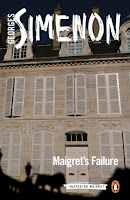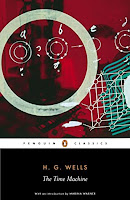A seaside town recedes into the past as the residents try to find their way through the emotional debris to construct their lives.
Book Review: A View of the Harbour is a book of which the reader may say: nothing happens, there's no plot, there's simply description. I've dismissed such books as over my head, too elusive, just not for me. But I sat back and read A View of the Harbour as if viewing an impressionist painting, just to appreciate the descriptions and absorb the emotions. The story is bits and pieces put together, in a way that's not quite clear, not sharply delineated, but consists of a few events, the feelings of the characters, the shaded emotions, small moments created, so the reader can let the scenes accumulate, accrete, gather together to form a blurred whole. It's quiet, subtle, thoughtful. There is little plot. The movement, the action, occurs in the thoughts, worries, emotions of the characters. Their feelings carry and propel the story, always musing, reflecting, considering. There's a whole lot of fretting going on. In the discussion of "likable" and "unlikable" characters, Taylor's are always both. Each character contains something appealing and something disagreeable or objectionable, just like most people. My favorite character was a precocious and incisive small girl, Stevie, who was also an enormous brat. In A View of the Harbour the Second World War is over and life is worse than before. Now there are all the lonely women, with the men distant, apparently okay, more easily satisfied. But the women are yearning, seeking, desperate. The story reminded me of Patrick Hamilton's The Slaves of Solitude published the same year, also in the aftermath of the War. I took awhile getting into the novel, to get a fix on the many characters, get a sense of all that was going on, but when I did suddenly everything became richer and rewarding. Elizabeth Taylor (1912-75) sees the sharp edges of human observation and interaction, how we all skirt around the edges of other people, and how we pass judgment on each other. She can write gorgeous sentences forever, as when she writes of "the pigeon-coloured evening." Aging characters are "not in any safe harbour, but thrust out to sea with none of the brave equipment of youth to buoy them up." Taylor jumps deep inside people's heads to capture the tragedy and comedy of life, while content to let the plot run behind trying to catch up. [4★]


































